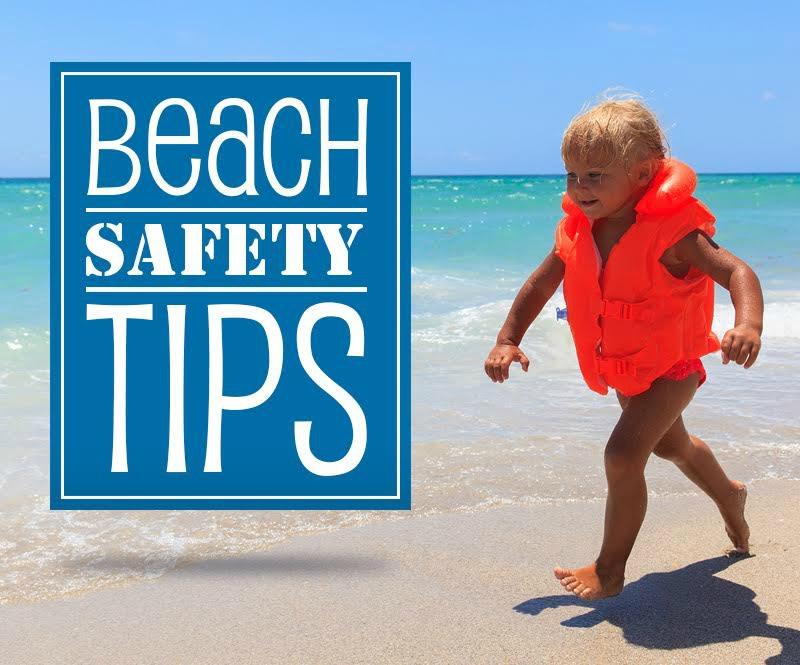White sand, clear water, rustling palm trees, laid back style: is it any wonder that the Pinellas beaches are consistently ranked among the best in the nation? People from around the world visit by the thousands every year to experience our beautiful and diverse local beaches, from chic Clearwater to history-rich Fort de Soto park. To enjoy the best possible trip, beachgoers must stay alert to the special safety risks of our beaches.
Awareness and prevention can mean the difference between a happy experience and a painful sunburn – or worse. Whether you are a first time visitor or longtime local, these important safety tips will help to ensure that your day at the beach is, well, a day at the beach!
Swim Safely
The Gulf of Mexico’s warm clear waters beckon swimmers of all ages. Like any large body of water however, its beauty conceals a power that can catch even strong swimmers off guard.
Only get in the water if you know how to swim
Even if you simply intend to wade in the shallows or float near shore on a boogie board, it is dangerous to enter the water if you do not know how to swim. If a wave knocks you off the boogie board and you cannot swim, you could drown. Even if you can swim, never float beyond where you can easily swim back to shore.
Bear in mind that while many Pinellas beaches employ lifeguards March through Labor Day[1] weekend (and year round in Clearwater), some beaches are not patrolled by lifeguards. Choose your beach accordingly, particularly if you have young children or non-swimmers in your party.
Supervise your children
Do not let small children out of your sight. Even breakers on the beach edge can knock over a small child and pull him or her into the water. Tragedies can happen in an instant. Do not let one happen to you.
Watch out for rip currents
Rip currents are powerful narrow currents flowing away from shore. Even the best swimmers cannot swim against them. If you get caught in a rip current, do not try to swim directly against it. Instead, swim parallel to the beach until you are out of the current. Only then should you head toward the shore. If you cannot swim out of the current, do not panic. Tread water, face the shore, and signal for help by waving your arms and calling out for help.[2]
Pay attention to beach warning flags
Florida has a beach flag system in place to warn you of water and storm conditions. Learn what each flag means before you hit the beaches. When you get to the beach, note which flag is flying, and plan your day accordingly. [Possible graphic showing the flags & their meanings?][3]
Swim sober
Alcohol and swimming do not mix. According to the CDC, alcohol consumption is a contributing factor “in up to 70% of deaths associated with water recreation.”[4]
Protect Your Skin
Our license plates say it all: Florida is the “Sunshine State.” The sun shines in Pinellas County an average of 361 days per year[5]. The palm trees and roseate spoonbills love the sunshine, and so do the people – but it can cause serious burns to your skin. At the beach your skin can burn even faster than you may think, because the sun’s rays reflect from the water and the sand.
Always wear sunscreen of at least SPF 30[6] and reapply it often throughout the day. Bring or rent a beach umbrella so that you can escape the sun. Wear wide-brimmed hats, sunglasses, and other protective clothing. Know when it is time to get off the beach and out of the sun for the day. You will be glad to enjoy the rest of your days at the beach sunburn free, rather than wasting them suffering through a painful and unhealthy burn.
Respect Local Wildlife
Jellyfish, stingrays, and sharks are common in Florida waters. Some tips:
- Avoid jellyfish. Depending on the breed of jelly and the stung person’s sensitivity, jelly stings can range in severity from merely irritating to deadly.
- Stingrays swim and breed close to the shore. The stingray’s tail has a poisonous spine that will deliver a painful sting if you step on it. Local authorities recommend that beachgoers do what we affectionately call the “stingray shuffle”: shuffle your feet as you walk through the shallows to avoid stepping on a stingray.
- Shark attacks are rare. In Pinellas County, there have only been 12 confirmed unprovoked shark attacks in the past 130 years. Only two of those attacks were fatal.[7] Nevertheless, sharks do swim in our waters, and you should exercise caution. Never enter the water when a shark has been spotted nearby, and never attempt to provoke a shark. For more tips about sharks visit: http://www.flmnh.ufl.edu/fish/sharks/isaf/diveradvice.htm.
[2] Source: http://www.noaawatch.gov/themes/rip.php
[5] Source: http://www.pinellascounty.org/facts.htm
[6] Source: http://www.epa.gov/sunwise/uviscale.html



